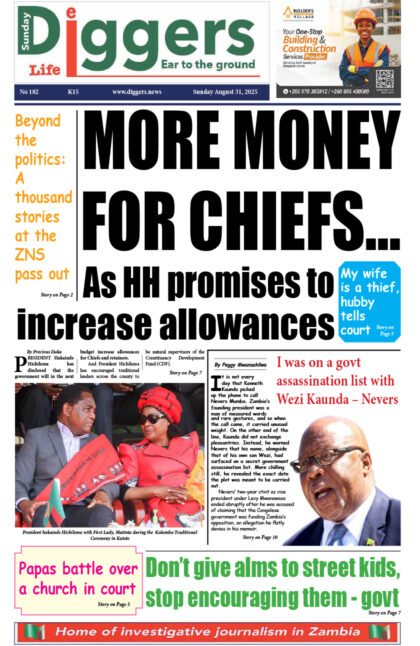The kwacha depreciated sharply against major currency convertibles to sink to at least K12.41 per dollar after the World Bank’s depressed real GDP growth forecast put Zambia at 3.3 per cent this year.
According to financial market players, the kwacha has maintained a weak position, depreciating to hit K12.41 per dollar, a six-month high, further losing value from a position where it traded at around K12.09 per dollar on April 3.
The local unit was seen trading at a market average of K12.41 and K12.46 per dollar by end of day, Friday, for bid and offer respectively, according to the Bank of Zambia, compared to trading at K12.09 and K12.14 nearly two weeks ago.
The kwacha’s sudden loss in value comes on the back of the World Bank’s slashed real GDP growth forecast for Zambia of 3.3 per cent this year, down from 3.5 per cent recorded last year, according to financial market players.
“The local unit closes the week on a rather sour note, depreciating amongst a basket of currencies. Recent news that the World Bank has cut Zambia’s GDP forecast from 3.5 per cent to 3.3 per cent along with strong dollar demand see the local unit continue on its depreciating path,” FNB Zambia stated in its daily treasury newsletter.
“The market on Thursday closed at K12.40 on the right-hand side – at levels last seen in October, 2018. ZAR/ZMW also crossed K0.88 at the end of the trading day.”
It stated that the kwacha’s continued slide would negatively impact on Zambia’s annual rate of inflation and possibly trigger a change in the Bank of Zambia’s (BoZ) Monetary Policy Rate (MPR), which currently sits at 9.75 per cent.
“If the local unit continues to trade on the back foot against the dollar, it could have an impact on the MPR and inflation rate. We are of the view that without any significant dollar flows into the market, a bearish kwacha will continue. A break of K12.50 is likely today (Friday),” FNB stated.
And Access Bank stated in its Treasury Market Watch released, Friday, that much of the dollar demand emanates from offshore investors, who have started to feel jittery about the local unit.
“The kwacha depreciated further on jitteriness in the market as offshore demand for USD continued. A break above K12.30 puts resistance at K12.40 (Oct 10, 2018 high) and K12.55 (Oct 9, 2018 high). We expect the kwacha to gain support from a tightening in liquidity as well as from the supply in conversions by exporting firms for vendor payments,” Access Bank stated.
Meanwhile, Cavmont Bank noted in its market report that current trends indicated that the local currency’s performance would continue to be depend on the strength of demand for dollars versus supply.
“Market activity was largely flat, with very little activity being seen from buyers as most anticipated a rebound in the local currency. Current trends seem to indicate that the local unit is likely to oscillate between losses and gains should the mismatch in demand and supply continue,” stated Cavmont.
























